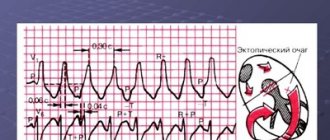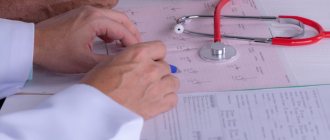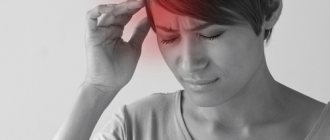Useful articles
Publication date:
Vegetovascular dystonia is a disease based on changes of a psycho-neurological nature, manifested by complaints of functional disorders of organs. The consequences of the disease are best addressed in a specialized clinic for headaches and autonomic disorders.
Causes of vascular headache development
Vegetative-vascular dystonia is an outdated name for autonomic dysfunction of the cardiovascular system. VSD is characterized by more than 150 symptoms, the most common of which is vascular headache.
The causes of headaches are:
- decreased tone of the blood vessels supplying the brain, which causes hypoxia (usually occurs with a systematic increase in pressure, which stretches the walls of blood vessels),
- pressure on nerve bundles specifically at the moment of a pressure surge (expansion of the walls of blood vessels),
- venous congestion and cerebral edema,
- arterial spasm.
Diagnosis and treatment
A preliminary diagnosis of VSD is usually made on the basis of examination data, medical history and physical examination data. If necessary, additional research methods are prescribed (ECG, laboratory research methods, if necessary, instrumental research methods such as MRI, ultrasound, CT). A full examination is necessary to exclude somatic diseases, since VSD often accompanies the underlying disease.
The success of further treatment largely depends on the timely and correct diagnosis of VSD. If there are frequent attacks of headaches, weakness, dizziness, fatigue, insomnia, unreasonable anxiety, fear, jumps in blood pressure and heart rate, a “lump” in the throat, difficulty breathing, pain in the heart and stomach, as well as cold and numb limbs – then it is imperative to seek medical help.
Treatment includes medicinal methods, including sedatives, stimulants, vascular and other drugs to normalize the activity of the autonomic nervous system.
Non-drug treatment methods are also widely used, such as acupuncture, massage, physiotherapy and exercise therapy.
Symptoms of headache with vegetative-vascular dystonia
The symptoms of vascular headaches are very diverse, but the main difference from other types of pain is less intensity, rather “background” pain, but painful attacks, for example, migraines, can also occur.
- Headache with VSD accompanies a person constantly with varying intensity. She goes away during sleep, but returns within the first minutes after waking up. Due to the “background” course of pain, it often begins to be perceived as a normal condition. But if you ask such a patient if he has a headache, he will always answer “yes.”
- The pain with VSD is “dull.” It can be squeezing, bursting, pulsating, etc. Its intensity is low (except for attacks, which are also “dull”, although strong), therefore, if the patient complains of acute pain, this most likely will not be VSD.
- A constant headache slightly disrupts the perception of reality: sounds may seem muffled, the movements of the surrounding world are inhibited and excessively smooth. This condition can be dangerous for a person, as he may inadequately assess the situation and, for example, get hit by a car.
- Vascular headache is often accompanied by other vegetative manifestations and neurological conditions: dizziness, unsteadiness of gait and difficulties with balance and coordination of movements, fainting, drowsiness, weakness, nausea, tinnitus, “stars” before the eyes, increased sweating (especially of the palms).
- The pain may intensify when bending over, which once again proves its vascular origin.
- The localization can be absolutely any: the entire head, one half of the head, a “hoop” at the level of the forehead, only the forehead/temples/back of the head/vertex/eye sockets, with irradiation to the ear or neck.
- The nature of the pain is usually aching, squeezing or, conversely, bursting, often pulsating (not necessarily in time with the heartbeat).
- Painkillers are usually ineffective for vascular pain. In some cases, antispasmodics help.
Often, exacerbations of headaches occur during periods of intense and prolonged mental activity, strong emotional stress, physical overload, weather and climate changes, etc. Read more about the causes and symptoms of VSD here.
Kinds
There is still no unified classification of vegetative-vascular dystonia that would take into account the diversity of its manifestations. In medical practice, VSD is most often divided into several types:
- vagotonic – the clinical picture is due to the predominance of the parasympathetic department over the sympathetic one (low blood pressure, chills, dizziness, lightheadedness, “lump in the throat” and others);
- sympathicotonic - symptoms are associated with hyperfunction of the sympathetic department (increased blood pressure, rapid heartbeat, feeling of heat);
- mixed - both types of symptoms may be present in the clinical picture.
Depending on the mechanism of development, the syndrome is divided into two types: primary and secondary. The primary form of VSD occurs independently, the secondary form occurs against the background of existing diseases of various localizations.
Vegetative-vascular dystonia is also divided into subtypes depending on organ symptoms. Here are several clinical variants of VSD:
- changes in the cardiovascular system;
- disruption of the gastrointestinal tract;
- psychoemotional and nervous disorders;
- changes in the functioning of the respiratory system.
The most common VSD involves the cardiovascular system. This type of syndrome has its own name - neurocirculatory dystonia. It is divided into several clinical subtypes.
| Hypertensive | Hypotonic | Cardiac |
| Characterized by increases in systolic blood pressure, palpitations and interruptions in heart function. Combined with other manifestations of sympathicotonia (for example, hot flashes, sweating). | It is characterized by lowering blood pressure and slowing heart rate. Other symptoms include signs of vagotonia (dizziness, fainting, and others). | The main complaint is pain in the heart area of varying nature and severity. Most often, the pain is stabbing and occurs against the background of emotional stress. |
Any of the listed variants of vegetative-vascular dystonia can be of three degrees of severity: mild, moderate or severe. The severity of the condition is assessed based on the client’s complaints and the severity of clinical manifestations.
The course of VSD can be permanent (constant) or paroxysmal (paroxysmal). The first variant of the syndrome is spoken of in cases where the symptoms bother you almost every day and are mild or moderate. A vegetative-vascular attack begins suddenly against the background of the patient’s relative health and is accompanied by a significant deterioration in the general condition. As a rule, an attack is provoked by overwork or psycho-emotional stress.
Clinical manifestations
The whole variety of symptoms of autonomic dysfunction can be divided into several groups. In this case, the organ localization of manifestations of vegetative-vascular dystonia is taken into account.
Cardiovascular manifestations
Cardiovascular symptoms in adults and children are very common with VSD. The main ones are cardialgia (pain in the heart) and various rhythm disturbances. Most often, heart pain appears suddenly against the background of previous emotional stress, less often they are observed at rest. They have a stabbing character. Patients themselves usually describe the pain syndrome with the phrase “stabbing like needles,” pointing to the area of the heart.
The duration of pain varies. For some it is a single tingling sensation, for others it is a long-term discomfort. The pain can also radiate to the shoulder girdle, left arm or shoulder blade, and less commonly to the right half of the body. Such symptoms sometimes cause suspicion among doctors due to the similarity of clinical manifestations with coronary heart disease, in particular with angina pectoris.
Rhythm disturbances are represented by its slowdown or acceleration (brady- and tachycardia). Bradycardia is usually not felt by the patient and is detected during examination. An increased heart rate may be perceived as palpitations. Less common are extrasystoles, which are felt as a “fading” of the heart.
This group of symptoms also includes an increase or decrease in blood pressure (hypertensive and hypotonic type of syndrome). The vascular manifestations of VSD are diverse. They are mainly represented by chilliness and freezing, coldness of the extremities, and pallor of the skin.
The most pronounced cardiovascular signs of vegetative-vascular dystonia are in patients suffering from paroxysms. During an attack, the symptoms sharply worsen, and in addition to them, uncontrollable fear, a feeling of lack of air, and others appear.
Gastrointestinal manifestations
Symptoms of VSD from the digestive organs are varied. They can be combined into two large groups: dyspepsia and irritable bowel syndrome. In the first case, the patient's complaints are presented as follows:
- pain in the projection of the stomach or esophagus of varying intensity, not having a clear relationship with food intake;
- belching air;
- feeling of fullness in the stomach, distension;
- flatulence;
- nausea;
- unpleasant taste in the mouth, often metallic or bitter;
- tendency to diarrhea or constipation.
Such symptoms are similar to manifestations of a peptic ulcer, but when examining the patient, no signs are found. The listed complaints bother patients for a long time, and drug therapy does not provide a lasting effect. Disorders of the gastrointestinal tract often cause a decrease in appetite and body weight.
Another type of disorder with autonomic dystonia is irritable bowel syndrome. Its main manifestations are stool upset and widespread abdominal pain. At the same time, the patient’s appetite does not suffer, and body weight remains the same. Painful sensations can be long-lasting and aching, or acute, paroxysmal (like spasms). Stool disorders are represented by diarrhea (defecation three times a day or more often) or constipation (stool less than three times a week).
Respiratory symptoms
The main respiratory symptoms of VSD are represented by neurogenic respiratory disorders. The respiratory system, although considered autonomous, is still closely connected with the emotional state. Anxiety and low mood play a special role here.
Under the influence of a psychogenic factor, the rhythm of normal breathing is disrupted. It becomes faster and deeper. As a result, hyperventilation develops, which can lead to biochemical changes. A patient with respiratory disorders experiences hypocapnia (lack of CO2 in the blood) and respiratory alkalosis (alkalization of the blood). These shifts can lead to pain and other sensory disturbances, which again triggers breathing failure.
Respiratory disorders may include the following:
- labored breathing;
- feeling of lack of air;
- violation of the frequency and depth of breathing;
- equivalents of hyperventilation (frequent sighs, coughing, yawning).
Respiratory symptoms of VSD are sometimes referred to as “empty breath.” The patient's main complaints are dissatisfaction with inhalation and a feeling of lack of air. The constant feeling of lack of air is manifested not only by deep breaths. Patients do not tolerate hot weather and prolonged stay indoors.
Respiratory disorders are more pronounced in crowded places or during stressful situations. In the paroxysmal form of VSD, respiratory disorders are of the nature of a hyperventilation crisis and are expressed to a significant extent.
Nervous and psychoemotional disorders
This group of symptoms is regarded by most doctors as the main one. Mental and emotional disorders in VSD are most pronounced. They can be represented as follows:
- increased anxiety and constant nervousness;
- lability (swings) of mood, a tendency to decrease;
- various types of phobias (fears), especially social ones;
- panic disorders;
- sleep disorders;
- obsessive thoughts and actions (constant hand washing, checking things);
- non-acceptance of oneself;
- loss of interests and desire to do anything;
- inability to enjoy or take pleasure in anything.
Neurological symptoms also include fainting. They are more often observed in adolescents and young adults. The mechanism of their development is associated with a short-term decrease in cerebral circulation. Fainting can last from a few seconds to several minutes. It is not accompanied by convulsions, and after fainting there may be general weakness and a feeling of weakness.
In most patients, true neurological disorders (primary headaches, neurogenic fainting) or mental illnesses are hidden under the “mask” of VSD. The fact is that the diagnosis of VSD is only a statement of the fact that the patient has some somatic symptoms. The root cause of these complaints remains unknown to general practitioners.
Somatic manifestations of VSD in psychiatry are almost always considered as a consequence of mental disorders, especially the anxiety spectrum. The range of mental disorders that have symptoms of vegetative-vascular dystonia includes depression, anxiety-phobic disorders, mania and neurotic-type syndromes.
Other symptoms
VSD can also manifest itself as thermoregulation disorders. A number of patients may experience a rise in temperature due to emotional stress, more often in the morning. This may be accompanied by a feeling of heat and profuse sweating. Temperature rises are more often observed in the autumn-winter period.
With the vagotonic type of VSD, patients blush easily in stressful situations. The skin has a cyanotic (blue) color, moist and cold. Upon closer examination, a vascular pattern is revealed, giving the skin a marbling appearance.
Vagotonia is also characterized by excessive greasiness of the skin and a tendency to acne. Sympathicotonia, on the contrary, is characterized by dry skin and a tendency to peel. Sweating in patients is scanty.
Diagnosis of headache due to VSD
A headache can occur in many cases and for various reasons, so it is very important to carry out a differential diagnosis of vascular headache:
- magnetic resonance or computed tomography (to exclude tumors, stroke, vascular malformation, consequences of traumatic brain injury, etc.), electroencephalography,
- X-ray of the head and cervical spine (to exclude sinusitis, skull injuries, displacement of the cervical vertebrae),
- vascular doppler,
- neurological examination (palpation of the neck and shoulder girdle, neurological tests),
- blood tests.
If you suffer from frequent headaches, you need to visit a neurologist who will prescribe the necessary tests and select adequate treatment.
Eltacin® in the treatment of VSD
Therapy for VSD should be aimed at eliminating its cause, and not masking the symptoms. This is precisely why Eltacin® was developed. It contains 3 amino acids: cystine, glycine and glutamic acid. Their combination promotes the production of glutathione in the body - one of the powerful and natural antioxidants in the body, which neutralizes the effects of free radicals, prolongs the life of cells and prevents their death, normalizes the supply of oxygen to tissues and individual cells and helps enzymes maintain their functions. Thanks to this, the drug allows you to eliminate the symptoms of VSD, as well as influence the root of the problem and restore the balance between organs and systems, disturbed by the negative effects of free radicals.
Eltacin®:
- is the strongest endogenous antioxidant;
- sold at an affordable price.
- dispensed without a doctor's prescription;
Treatment of vascular headache and prevention of VSD
There is no actual treatment for vascular headache, i.e. It is extremely difficult to stop an attack of pain. Therapeutic measures are aimed at increasing vascular tone, restoring normal blood circulation to the brain and improving the functioning of the cardiovascular system. Read more about the treatment of vegetative-vascular dystonia and specifically headaches at the Aximed neurology clinic “here”.
In addition to drug treatment for people suffering from headaches and other symptoms of VSD, Aximed neurologists recommend:
- eliminate stressful situations from your life as much as possible (change jobs, undergo a course of family psychotherapy, etc.),
- maintain a sleep/wake and work/rest schedule,
- stop smoking (this constricts blood vessels and weakens the elasticity of the walls),
- eat a complete and balanced diet,
- Jogging is highly recommended, since in the process the brain is actively saturated with oxygen (which may be lacking due to reduced blood supply to the brain),
- massages (especially the collar area).
Are you plagued by headaches? Consult a neurologist. Vegetative-vascular dystonia can be treated, but the more advanced the case, the longer it will take, and the more likely it is that the pain will return again. Do not delay treatment, because life without pain is much more pleasant.
About vegetative-vascular dystonia
Vegetovascular dystonia (in other words, autonomic dysfunction) is a disorder of the autonomic nervous system.
The autonomic nervous system is part of the nervous system that regulates many processes in the internal organs. It is sometimes called the autonomic nervous system because... regulation occurs autonomously, i.e. without the participation of human consciousness. The autonomic nervous system conventionally has two divisions: sympathetic and parasympathetic, which are responsible for oppositely directed actions: for example, the parasympathetic division stimulates digestion, and the sympathetic one slows it down. Normally, the parasympathetic and sympathetic systems are in balance without predominance of one over the other.
Vegetovascular dystonia is an imbalance in the autonomic nervous system, the consequence of which is disruption of the functioning of internal organs. Vegetative-vascular dystonia affects up to 70% of the adult population and 15-25% of children.
How to distinguish dystonia from heart and cerebral vascular disease
If you find symptoms that resemble VSD, you should not delay treatment, much less ignore this problem. But first of all, you need to make sure that you really have vegetative-vascular dystonia.
To clarify the diagnosis, your doctor will refer you for examination to a cardiologist and neurologist. Hardware research methods will help to exclude angina pectoris, arrhythmia, damage to the heart valves, changes in the blood vessels of the brain, and tumors.
With vegetative-vascular dystonia, symptoms periodically appear and disappear, and are associated with physical or emotional discomfort. The rest of the time the person feels healthy.










